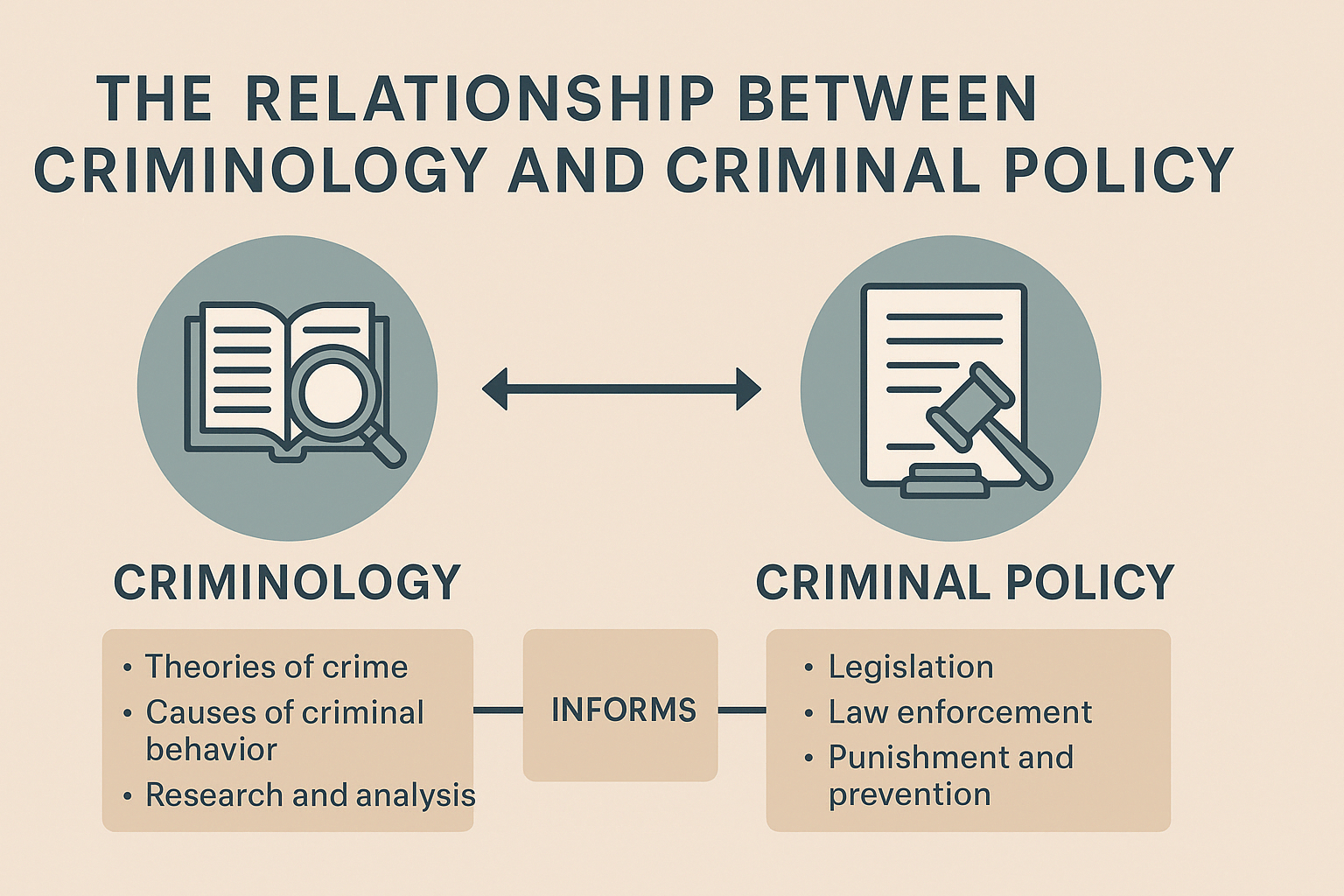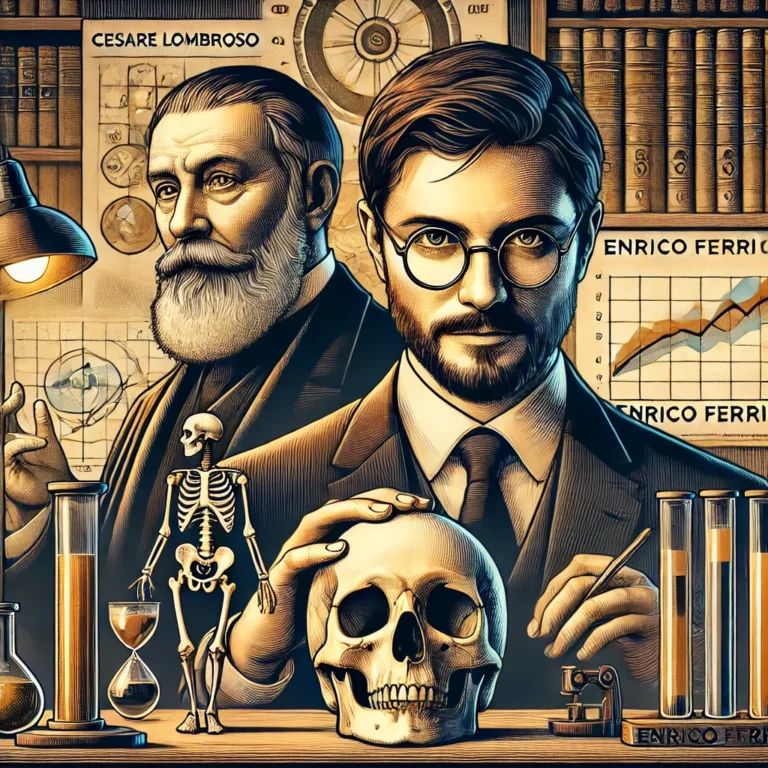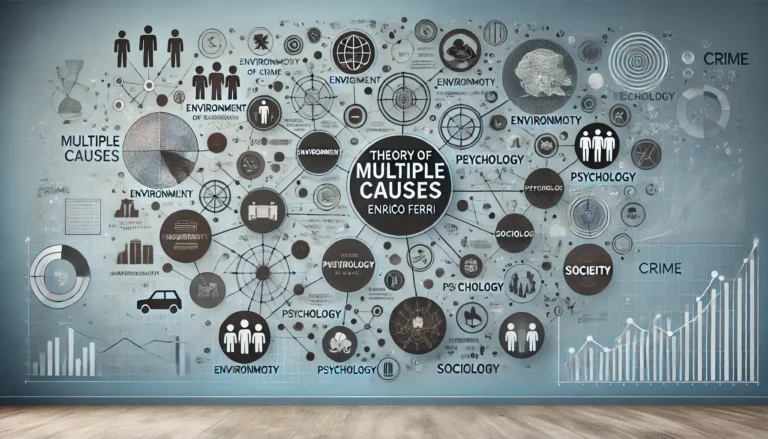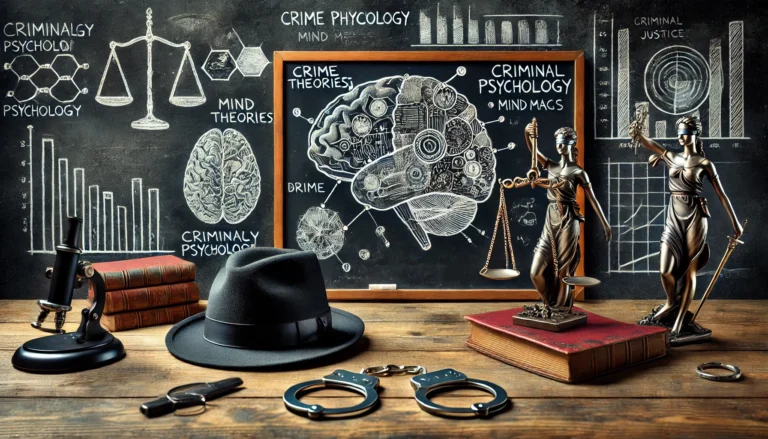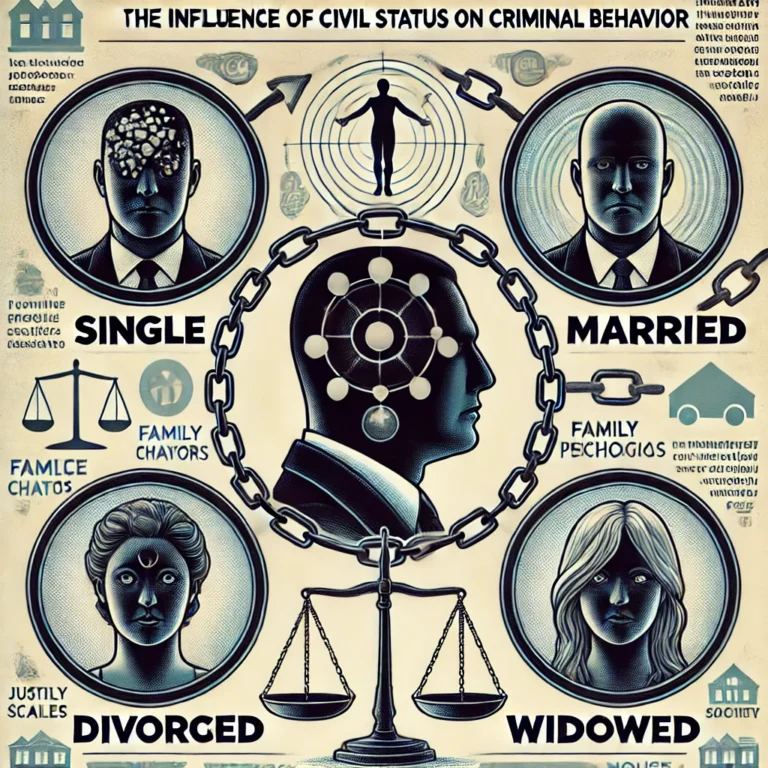The Relationship Between Criminology and Criminal Policy
Understanding the connection between criminology and criminal policy is essential for analyzing how societies respond to crime and criminal behavior. Criminology, as a scientific discipline, studies the causes, patterns, and consequences of crime, while criminal policy focuses on developing strategies and legal frameworks to control and prevent crime. The synergy between the two fields forms the foundation of effective criminal justice systems worldwide. When policy is informed by rigorous research and theoretical frameworks provided by criminology, it becomes more effective, equitable, and sustainable. This article explores in depth the multifaceted relationship between criminology and criminal policy, offering insights into their interaction, evolution, and importance for modern societies.
What is Criminology?
Definition and Scope
Criminology is the scientific study of crime, criminal behavior, and the various social, psychological, and environmental factors that contribute to it. It involves a multidisciplinary approach, incorporating elements from sociology, psychology, law, economics, and political science. Criminologists aim to uncover the underlying causes of criminal behavior, analyze crime trends, and assess the effectiveness of different methods of social control.
The scope of criminology is broad, encompassing everything from street-level crimes and white-collar offenses to cybercrime and transnational criminal networks. It also explores victimology—the study of victims and their role in the criminal process—and the societal responses to both crime and criminals. Criminology not only helps in understanding why crimes occur but also offers critical evaluations of the justice system, policing, punishment, and rehabilitation.
The Role of Criminological Theories
Criminological theories provide frameworks for interpreting criminal behavior and guiding research. These theories are central to criminology and have direct implications for criminal policy. Key theoretical perspectives include:
- Classical Theory – This theory posits that individuals have free will and make rational choices. It supports the notion that punishment should be proportionate and act as a deterrent.
- Biological Theories – These suggest that genetic and physiological factors may predispose individuals to criminal behavior, and emphasize the role of brain chemistry, hormones, and neurodevelopment.
- Psychological Theories – Focus on internal mental processes, including personality traits, mental disorders, and childhood experiences that may contribute to criminal behavior.
- Social Theories – Emphasize the role of social structures, cultural norms, peer influence, economic inequality, and family dynamics in shaping criminal tendencies.
Each of these theories contributes to a more comprehensive understanding of crime, helping to shape interventions that are tailored to specific causes and contexts.
What is Criminal Policy?
Concept and Objectives
Criminal policy encompasses the set of principles, laws, strategies, and practices developed by governments and institutions to address crime and its consequences. Its main objectives are to:
- Prevent crime through deterrence and social development
- Punish and incapacitate offenders in a proportionate and just manner
- Rehabilitate criminals and facilitate their reintegration into society
- Protect the rights of victims and ensure public safety
Criminal policy is not static; it evolves with societal values, political priorities, and new criminological insights. Effective criminal policy requires continuous evaluation, public support, and a commitment to justice and human rights.
Components of Criminal Policy
The implementation of criminal policy involves multiple interconnected components:
- Criminal Law – Defines what constitutes a crime and outlines corresponding penalties. It sets the legal boundaries for acceptable behavior.
- Policing Strategies – Include law enforcement tactics, crime prevention initiatives, community policing, and intelligence-led policing to maintain order and deter criminal activity.
- Judicial Practices – Encompass court procedures, prosecutorial discretion, sentencing guidelines, and legal protections for the accused.
- Corrections and Rehabilitation – Cover prison systems, probation, parole, counseling, education programs, and reintegration services aimed at reducing recidivism.
- Crime Prevention Programs – Target the root causes of criminal behavior through community outreach, education, social support services, and youth engagement.
These components must work in harmony, guided by sound policy and informed by empirical research, to create a just and effective criminal justice system.
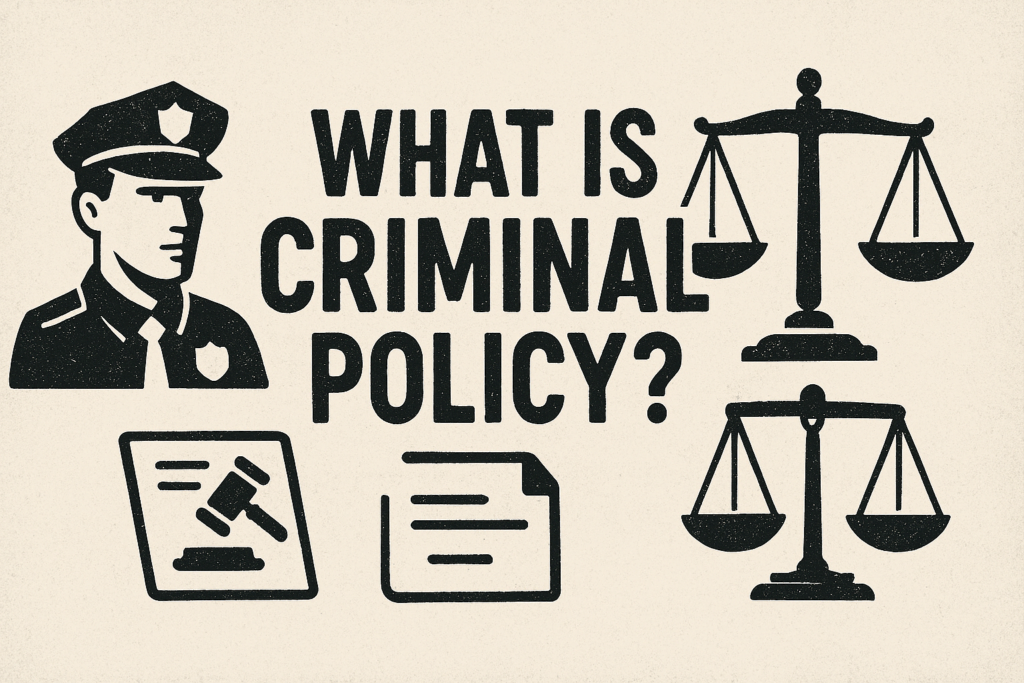
Criminology and Criminal Policy: An Interdependent Relationship
How Criminology Informs Criminal Policy
One of the most significant aspects of the relationship between criminology and criminal policy is how academic research informs real-world policy decisions. Criminologists collect and analyze data on crime trends, risk factors, and the outcomes of legal interventions. They assess the effectiveness of policies such as mandatory sentencing, stop-and-frisk, drug enforcement strategies, and rehabilitation programs.
This evidence-based approach helps policymakers understand which initiatives work and which do not. For example, studies showing the limited effectiveness of incarceration in reducing recidivism have led to a shift toward rehabilitation and restorative justice. Similarly, data-driven policing models use crime mapping and statistical analysis to deploy resources more effectively.
Criminological research is essential in identifying patterns such as the overrepresentation of marginalized communities in prison populations, which can inform equity-focused reforms. Without the input of criminology, criminal policy risks being reactive, ideologically driven, and disconnected from reality.
Criminal Policy as a Tool to Apply Criminological Insights
Just as criminology informs policy, criminal policy serves as a platform to operationalize criminological theories. When governments adopt harm reduction strategies in response to research on drug addiction, or when they implement diversion programs for juvenile offenders based on developmental psychology, they are putting criminological insights into action.
For example, situational crime prevention strategies are grounded in rational choice theory, which suggests that altering the environment can reduce opportunities for crime. Neighborhood watch programs, improved street lighting, and surveillance systems are policy responses derived from criminological research.
The integration of theory and practice ensures that criminal justice interventions are not only efficient but also fair and grounded in human behavior science.
Historical Development of the Relationship
Early Theories and Policy Implications
The relationship between criminology and criminal policy has evolved over centuries. In the 18th century, the Classical School of criminology, led by Cesare Beccaria and Jeremy Bentham, advocated for clear, predictable laws and proportionate punishment. Their ideas greatly influenced early legal reforms in Europe, focusing on deterrence, due process, and the rule of law.
The Influence of Positivist Criminology
In the 19th century, positivist criminologists like Cesare Lombroso introduced the idea that criminal behavior might be biologically determined. While many of Lombroso’s ideas have been discredited, his emphasis on scientific observation and data collection laid the groundwork for modern criminological methods. Policies based on these theories included segregation of “dangerous” individuals and the development of early diagnostic tools.
Modern Criminology and Policy Integration
In the 20th and 21st centuries, criminology has grown increasingly empirical and interdisciplinary. Today’s research involves sociology, public health, urban studies, and psychology. Policies informed by modern criminology include restorative justice, trauma-informed care, and community-based corrections. These approaches focus not just on punishment, but on addressing root causes and fostering rehabilitation, thereby enhancing the efficacy and humanity of criminal policy.
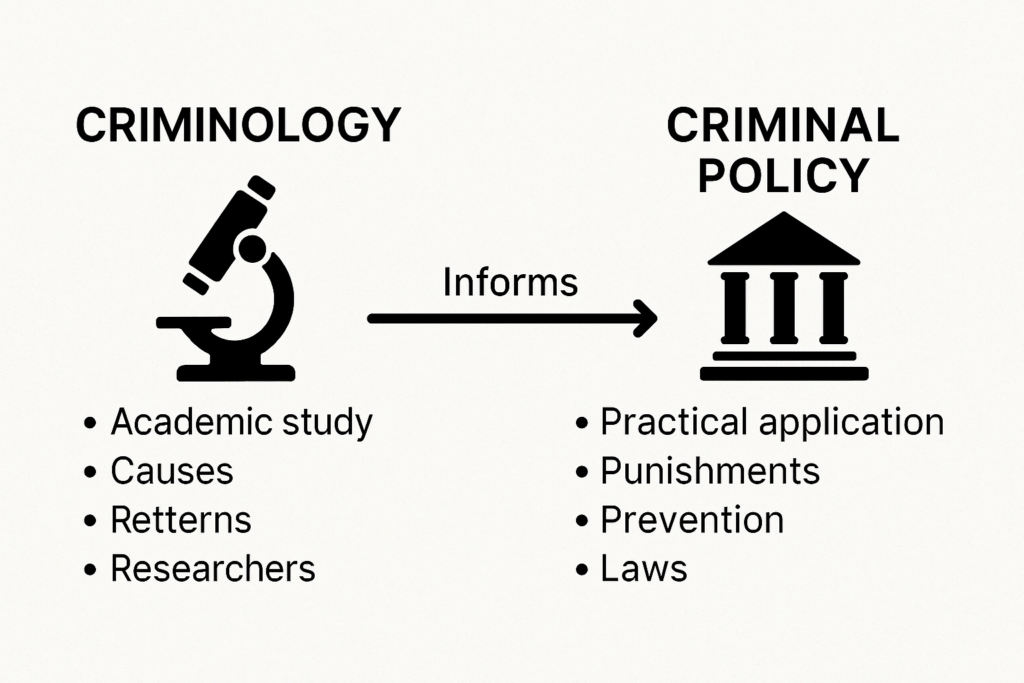
The Role of Criminologists in Policy-Making
Advisory and Research Roles
Criminologists serve as researchers, consultants, and advisors to government agencies, international organizations, and non-governmental bodies. They conduct impact assessments, pilot studies, and longitudinal research to inform criminal policy. Their work is crucial in:
- Drafting new legislation
- Designing public safety initiatives
- Evaluating correctional programs
- Advising on policing reforms
Criminologists also contribute to academic journals, public discourse, and media, shaping public opinion and encouraging evidence-based debate on criminal justice issues.
Ethical Considerations
The involvement of criminologists in policymaking raises ethical responsibilities. They must navigate the tension between scientific objectivity and political advocacy. Ensuring the ethical use of research findings, avoiding bias, and advocating for humane and just policies are essential parts of their professional role.
Case Studies: Criminology Shaping Criminal Policy
Restorative Justice Programs
Restorative justice prioritizes healing over punishment. Inspired by criminological research on victim-offender reconciliation, this approach has been adopted in countries such as Canada and New Zealand. Programs involve dialogue between victims and offenders, community involvement, and a focus on accountability and restitution.
Crime Prevention Through Environmental Design (CPTED)
Environmental criminology has shown that the design of physical spaces can influence crime rates. CPTED strategies include modifying building layouts, enhancing surveillance, and managing access points to deter criminal behavior. These practices have been used in urban planning policies in the U.S., U.K., and Australia.
Drug Policy Reform
Criminological critiques of punitive drug policies have led to the implementation of harm reduction approaches. Countries like Portugal have decriminalized drug possession and invested in treatment programs, resulting in lower addiction and incarceration rates. These policy shifts exemplify the practical value of criminological research.
Challenges in Aligning Criminology and Criminal Policy
Political Interference
Despite the value of criminological insight, criminal policy is often driven by political considerations. Politicians may adopt tough-on-crime stances to appeal to voters, even if such policies lack empirical support. This can result in mass incarceration, mandatory minimum sentences, and the erosion of civil liberties.
Funding and Institutional Barriers
Criminological research may suffer from limited funding and lack of access to governmental data. There may also be resistance from traditional institutions to adopt reformist ideas. Bridging the gap between academia and policymaking requires investment in research infrastructure and more collaborative frameworks.
Bridging the Gap: Strategies for Integration
Promoting Evidence-Based Policy
To align criminal policy with criminological research, governments must commit to evidence-based policymaking. This includes:
- Funding rigorous studies
- Conducting independent evaluations
- Using data to assess program effectiveness
- Avoiding anecdotal or ideologically driven approaches
Enhancing Collaboration
Strengthening the relationship between practitioners and academics is key. Policymakers should involve criminologists early in the legislative process, and academic institutions should provide training for applied research. Cross-sector partnerships and public forums can facilitate knowledge exchange.
Public Engagement and Education
An informed public can push for rational and humane policies. Media, educational institutions, and NGOs play a vital role in disseminating criminological knowledge. Public awareness campaigns can challenge stereotypes, reduce fear-based policies, and build trust in the justice system.
Future Prospects for Criminology and Criminal Policy
The Impact of Technology and Data Science
The digital era offers new tools for criminologists and policymakers. Predictive analytics, AI, and big data can improve crime forecasting and resource allocation. However, ethical concerns such as privacy, surveillance, and algorithmic bias must be addressed.
Criminology is also expanding into cybercrime, digital forensics, and online deviance—areas where policy is still catching up. Ensuring that technological solutions are rooted in human rights and scientific integrity is a priority for the future.
Global Collaboration
Crime increasingly transcends borders, requiring coordinated international responses. Criminological research informs global criminal policy on issues such as terrorism, trafficking, and environmental crime. Institutions like the UN Office on Drugs and Crime (UNODC) rely on academic research to shape global strategies and support capacity building in developing nations.
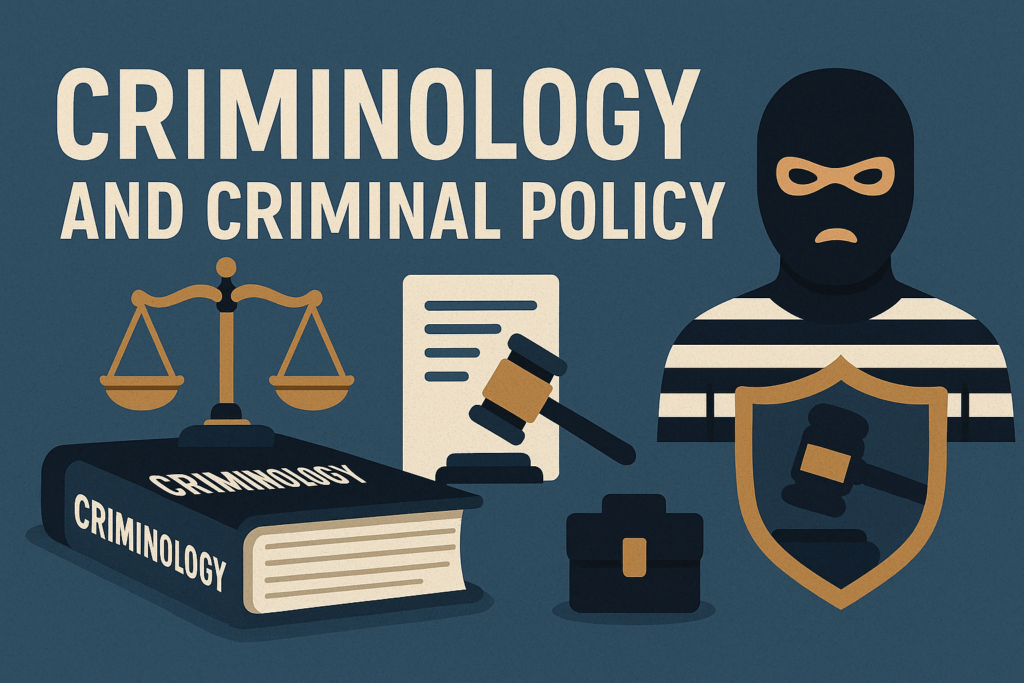
Conclusion
The dynamic relationship between criminology and criminal policy plays a crucial role in the development of effective, fair, and humane criminal justice systems. While criminology provides the theoretical and empirical foundation, criminal policy operationalizes this knowledge into real-world action. Strengthening this relationship through collaboration, funding, and public engagement will be essential for addressing modern criminal challenges and promoting justice across societies.
Future directions should prioritize ethical, evidence-based policymaking supported by interdisciplinary research. Only through mutual reinforcement can criminology and criminal policy create a safer and more just world for all.

